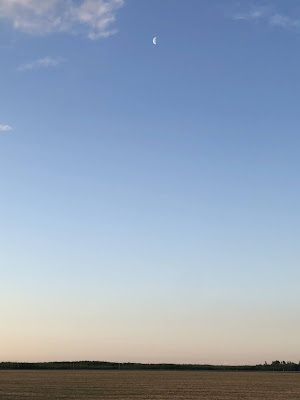There's a bird on our land that sings Bemidji three times in a row all day long. The bird is not hard to find, just hard to see. It haunts dense underbrush or lush tree foliage. You can stand for 15 minutes while it sings away and not be able to catch a glimpse of it.
Two years ago, I determined to identify the bird, no matter how long it took. It took about an hour of following the song through a low area of willows as the bird flitted from thicket to thicket. I got a positive ID, hurried home and paged through my bird book, and got its name. Then during the winter I forgot the name and what it looked like.
All next summer it sang Bemidji, but I never sought it out. He was back again this summer. I went out yesterday with binoculars to the forsythia hedge. He was in there somewhere. I caught a flash of yellow as he hopped around. If there's a gap of thirty seconds in the song, you know the bird has moved. But it quickly takes up singing again. I followed the song to four different spots, but never got another glimpse. After an hour I went home.
I checked my bird book. I was sure it was a warbler. I could eliminate many of them, then guessed it could be the Hooded Warbler. The description of it's song sounded like a possibility but Iowa is the northern limit of its range. Maybe with global warming...
I was out in the yard this morning when I heard it singing away in the forsythias. I didn't have the binoculars, but I was so close to the bird, binoculars would have been useless. It was in the leafy part at first, then moved to some dead branches which were so thick and tangled I still couldn't spot it. At last it appeared in an opening. Black mask over its eyes. It dropped down into the weeds, then popped up again. White eyebrows connected in the middle. Got it!
I didn't rush home. I knew my bird would be waiting in my book. And there it was: Yellowthroat, a warbler. Range: southern Canada south to the Gulf Coast. Winters in the Caribbean. Habits: "an active, inquisitive frequenter of dense, low cover on a variety of sites." Voice: "short, vigorous series of clear, high-pitched, 3 note phrases often written witchity, witchity, witchity." Some write bimidjity.
I should circle Yellowthroat in my book, but I don't ever write in books. I'll just write a post to the internet, where I can look it up next summer, if necessary. I must come up with a memorable title for my post.




